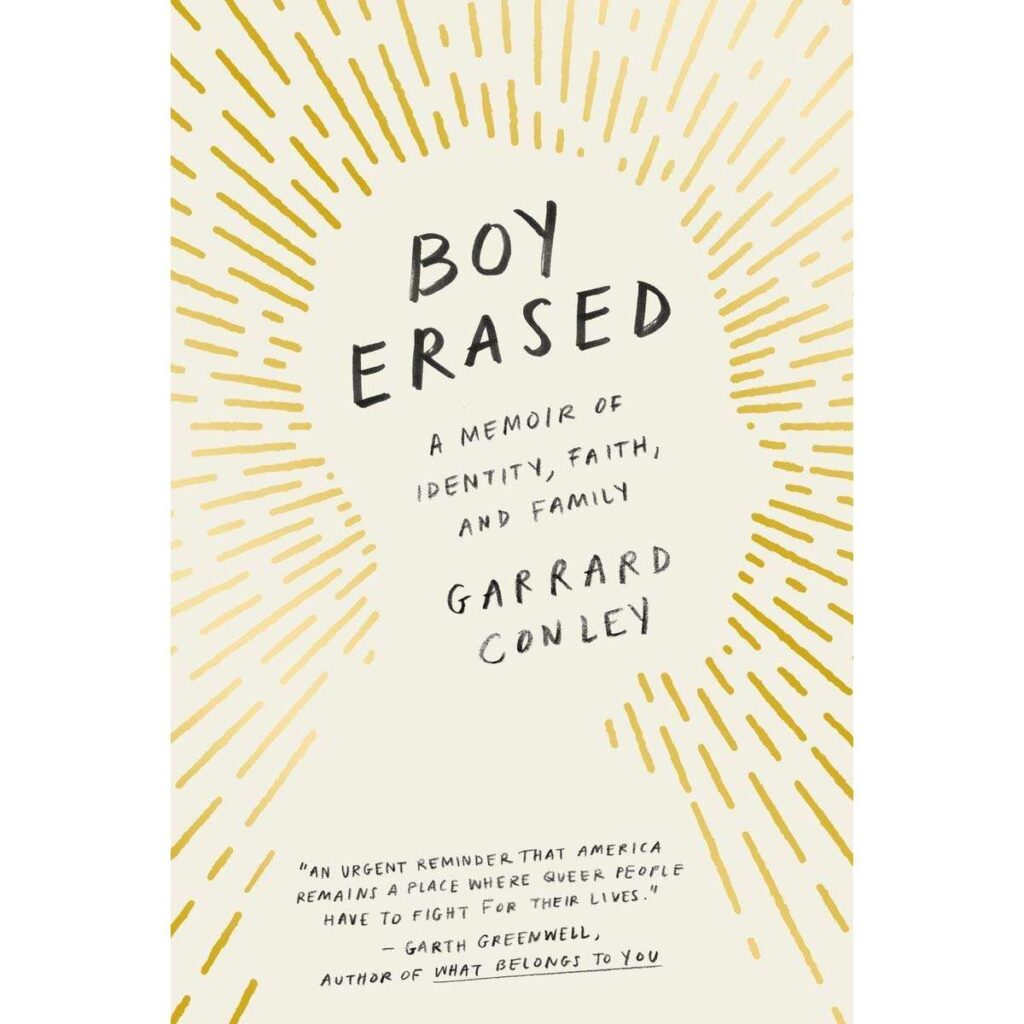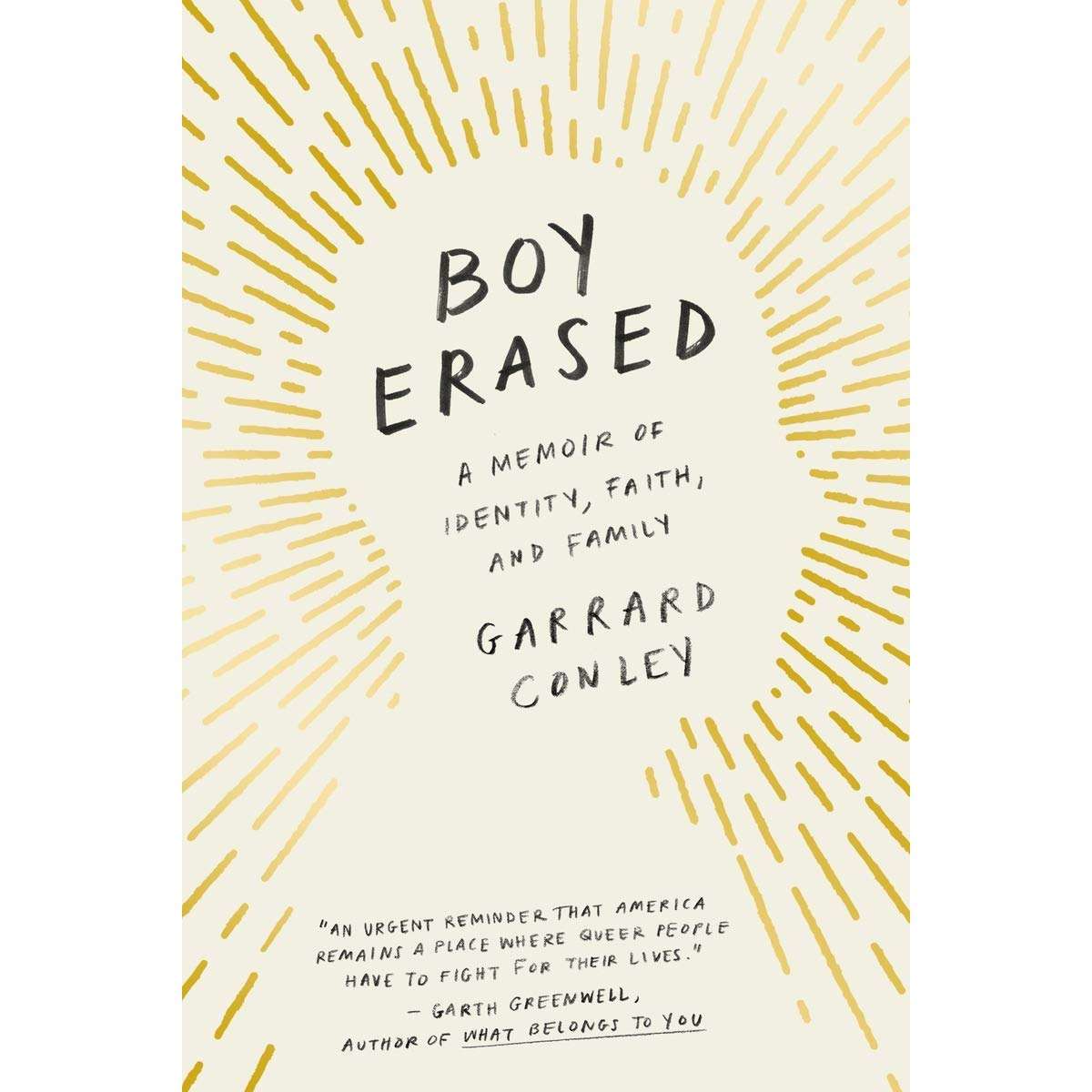Boy Erased by Garrard Conley
Growing up in small town Alabama in the 1990s/2000s was not exactly ideal for a young man struggling with the knowledge that he is gay, especially with a father who soon to be ordained as a Baptist pastor. All author Garrard Conley’s friends, his relatives, everyone he knows, believe homosexuality to be a perversion, a transgression against God. It isn’t until Garrard leaves home to attend college that he feels the freedom to entertain the idea that life could be different, that he might not have to hide forever.

That notion is fleeting, however; following a traumatic first sexual experience he is “outed” to his parents by the very person who assaulted him. Not long thereafter, he agrees voluntarily to attend a two-week trial program run by Love In Action (LIA), a fundamentalist Christian organization that promises to cure LGBT congregants of their “sexual addictions.”
Garrard is torn – he doesn’t feel addicted to anything, but at every turn he is told that what he does feel is wrong. Despite his misgivings, he checks into the LIA facility (in a rundown strip mall); as he makes his way down the narrow hallway to the meeting room, he offers up a prayer: God, I don’t know who You are anymore, but please give me the wisdom to survive this.
Author Conley’s description of his time in the LIA program is chilling. A Twelve Step Program modeled after Alcoholics Anonymous, a 274 handbook that was to be treated as gospel, a relinquishing of any privacy – these were all cornerstones of the process. The reinforcement that homosexuality is a sin, and that gay sex an unhealthy addiction was relentless. Patients were pressured to publically share instances of sexual deviance (many admitting privately that stories were made up in order to impress the facilitators) and they were encouraged to report their fellow patients, not just for expressing unsuitable thoughts or exhibiting sinful actions, but even for posture that was not “manly” or showing mannerisms that were not appropriate for their gender. Genealogies were scrutinized to find sinful behaviors in families: promiscuity, alcoholism, drug use, mental illness, pornography, gang involvement, abortions, gambling. Nothing was off limits, nothing was sacred.
While difficult to read, Conley’s internal monolog keeps us grounded as it focuses on his confusion: he wants to be honest about himself, but understands that to do so would hurt others he loves; he believes in God, but cannot justify the God of his parents who would condemn him for something he did not ask for yet which he cannot in honesty deny; he wants to do the right thing by agreeing to the program, but everything about LIA feels so very wrong.
What really sets this memoir apart, however, is its lack of bile. While what Garrard goes through is hard to read in its insensitivity and almost reprehensible ignorance, he is careful to acknowledge that, for the most part, the people running the LIA program truly felt they were doing God’s work. Fortunately Garrard is able to lean on his own faith – and his ability to question that faith – as well as the knowledge that his parents, while not believing or supporting his homosexuality, did believe and support him. His mother, especially, allows her love for her son to prove stronger than her religious convictions.
In Boy Erased, there is indeed right and there is wrong, and there is evil as well as salvation. But there are no devils, nor are there saints. There are merely people trying to do the best they can. Unfortunately, some of them are willing to be told what that best should be rather than discovering it for themselves, and some are blindly led down a supposedly righteous path because it is comfortable, familiar and easy to not question. But there are also those who do not understand, yet are willing to believe that understanding is not necessary in order to embrace another person. Or that God’s love is deep enough to embrace us all. In the end, there may not be acceptance, but there is love.
And that’s a story worth reading.
—Sharon Browning

